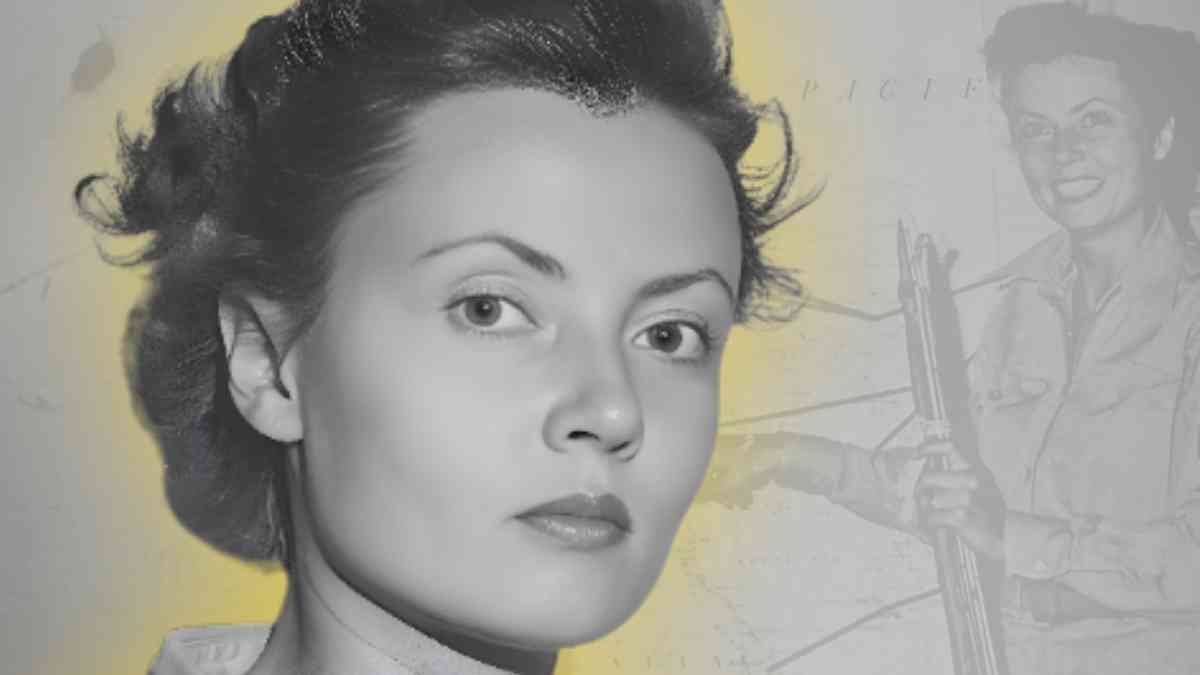Maggie Hastings: The Brave WAC Corporal Who Conquered Shangri-La

In the shadows of World War II’s well-known military stories lie tales of unsung courage—one of the most compelling being that of Maggie Hastings. Known formally as Corporal Margaret J. Hastings, she defied odds, survived a harrowing plane crash in the wilds of New Guinea, and captured the imagination of an entire nation. Her journey was one of resilience, inner strength, and quiet heroism, earning her the nickname “Queen of Shangri-La.”
Early Life and Enlistment in the Women’s Army Corps
Born in 1914 in the modest town of Owego, New York, Maggie Hastings was raised during a time when societal expectations for women were rigid and narrow. Yet even as a young woman, she displayed a natural confidence and ambition that set her apart.
When the United States entered World War II, Hastings answered the call to serve. In January 1944, she joined the Women’s Army Corps (WAC)—an organisation created to enable women to serve in non-combat roles while freeing men for the front lines. She was assigned as a military secretary, demonstrating both intelligence and professionalism in an environment still adjusting to the inclusion of women in military operations.
Her role eventually took her to Dutch New Guinea, one of the most remote and rugged postings in the Pacific theatre. There, she would unwittingly become a central figure in one of the war’s most extraordinary survival stories.
The Fateful Flight Over Shangri-La
On 13 May 1945, Maggie Hastings boarded a C-47 transport plane for what was meant to be a sightseeing trip over the mysterious, untouched Baliem Valley. At the time, the valley was rumoured to be a place of legend—nicknamed “Shangri-La” after the fictional paradise described in James Hilton’s novel Lost Horizon.
Tragically, the flight never completed its journey. The aircraft crashed into the dense mountainside of New Guinea, instantly killing 21 of the 24 passengers on board. Among the dead were both military personnel and WAC members.
Miraculously, three individuals survived the crash: Corporal Maggie Hastings, Lieutenant John McCollom, and Sergeant Kenneth Decker. Although badly injured—Hastings suffered severe cuts, infections, and damage to her feet—she managed to escape the wreckage and begin the battle for survival in the jungle.
Stranded in the Jungle: A Test of Endurance
The survivors found themselves in an isolated, uncharted wilderness, surrounded by steep cliffs, thick vegetation, and indigenous tribes with no prior contact with the outside world. With limited food and medical supplies, and no means of communication, the odds of rescue seemed remote.
Despite the physical pain from her injuries, Hastings played a vital role in maintaining morale, helping navigate their surroundings, and communicating with the native Dani tribespeople, who cautiously observed the newcomers. Her dignity and grace earned their respect, and eventually, the group was able to establish a form of mutual understanding with the villagers.
Word of the crash had eventually reached the outside world, and a team of American paratroopers was deployed to locate and protect the survivors. These troops would live with them in the valley for over three weeks while a rescue plan was developed.
The Daring Rescue from Shangri-La
The escape plan was unlike any attempted before. With no roads or suitable airstrips, the Army devised a high-risk operation using a military glider, which would be crash-landed in a small clearing and then used to extract the survivors.
In June 1945, after 47 harrowing days in the jungle, Maggie Hastings and the others were lifted to safety. The rescue became one of the most daring and innovative missions of the war, and Hastings was hailed as a national heroine upon her return.
Sudden Fame: The “Queen of Shangri-La”
News outlets across America picked up her story. Newspapers featured her on front pages, and journalists painted her as the “Queen of Shangri-La”—a strong yet graceful figure who had survived nature’s cruelest test. Photos of her in uniform, smiling despite visible signs of injury and exhaustion, struck a chord with the public.
She was placed on a war bond tour, appearing at events and speaking to the media. Her appearance and courage made her an instant celebrity, though she felt deeply conflicted by the attention. Hastings grieved for her fellow soldiers who had died in the crash, particularly the WAC friends she had grown close to during their deployment.
Her humility and quiet dignity were clear. In her own words, she described the fame as “difficult to reconcile with the pain of loss,” but she honoured the attention as a means to support the war effort.
Life After War: A Quiet Resolve
Unlike many wartime figures who used their fame to forge public careers, Maggie Hastings faded deliberately into the background. She married and moved on with civilian life, settling in upstate New York and later working at Griffiss Air Force Base. She never sought to capitalise on her story and rarely gave interviews in her later years.
Her family described her as reserved but proud of her service. She remained active in veterans’ organisations and maintained friendships with those she had served alongside. Despite the trauma she had endured, Hastings was never embittered. She chose grace over bitterness, reflection over spectacle.
In 1978, at the age of 64, she passed away from cancer. Her obituary made brief mention of her wartime heroics, but those who knew her understood the depth of her courage and humility.
Legacy: Courage Without Recognition
For many years, Maggie Hastings’s story was largely forgotten outside military circles. Yet historians and veterans’ groups have worked to restore her legacy. Her resilience in the face of disaster, her calm under extreme pressure, and her strength as a woman in a male-dominated wartime environment make her a pioneer in both military and gender history.
In more recent years, her story has been featured in documentaries and books that aim to shine a light on lesser-known heroes of World War II. These accounts portray Hastings not as a damsel in distress, but as a woman who embodied perseverance, empathy, and leadership in the darkest of moments.
Why Maggie Hastings Still Matters Today
In today’s world, where narratives of war often focus on combat and commanders, Maggie Hastings reminds us of the power of ordinary individuals doing extraordinary things. She was not a soldier who carried a rifle into battle, but a woman who carried others with her spirit, strength, and integrity.
Her story offers timeless lessons about resilience in adversity, grace under pressure, and the quiet forms of leadership that don’t always make headlines but shape the world all the same.
Conclusion: A Woman Who Redefined Heroism
Maggie Hastings may not be as widely known as generals or politicians, but her story endures as a symbol of silent bravery and unwavering determination. She did not seek the spotlight, nor did she boast of her survival. Instead, she represented the countless women whose contributions to history deserve far more attention than they often receive.
Her legacy lives on—not just in the history books, but in the enduring image of a woman who walked through fire and emerged with humility, dignity, and strength.



